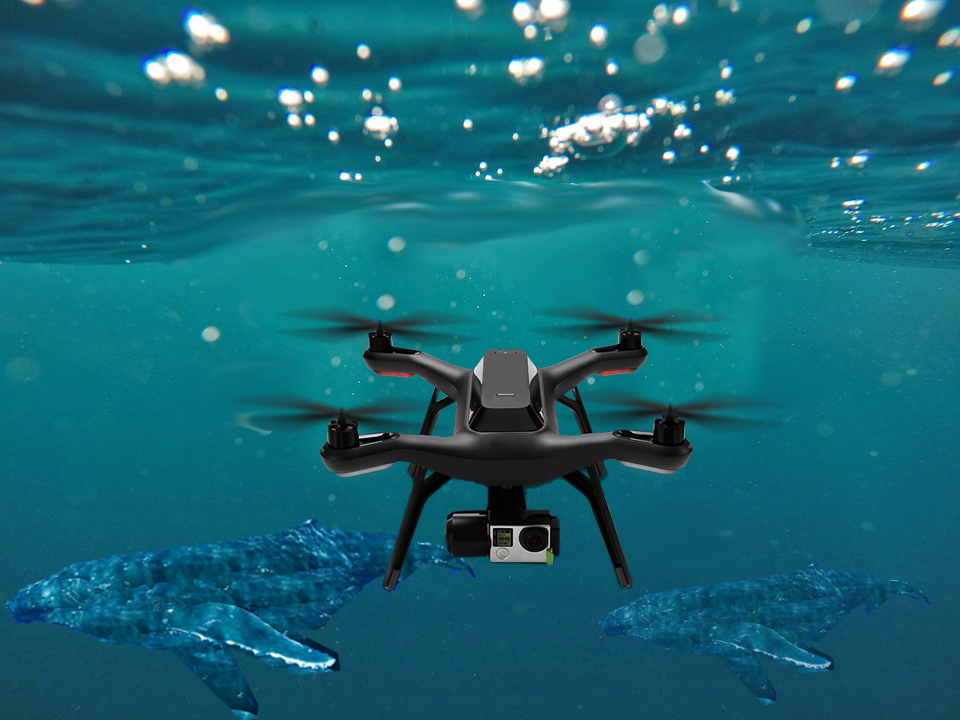Amphibious and autonomous? Drones and other vehicles making waves underwater
A drone that vacuums the ocean? One that collects whale mucus? An autonomous submarine? Airborne drones and autonomous vehicles are going under the surface of the ocean for data and defense, and they’ve got the nautical miles to prove it.
The submerged portion of bridges and piers need to be surveyed for signs of erosion, destruction and for visual signs of distress. Commercial divers undergo the task of underwater bridge inspections and for safety reasons, teams of three or more divers navigate below the water to not only inspect the bridge’s edifice but also monitor the other divers’ security. Underwater drones can now protect divers from these situations and make routine inspections and repairs possible. A survey and imaging system can be mounted on a remotely operated vehicle or an autonomous underwater vehicle to inspect the deepest structures and bridges. Underwater drones can supply better methods for acquiring and recording data that improve quality, cost-effectiveness and safety of traditional inspections.
Mississippi Gov. Phil Bryant recently announced the Governor’s Ocean Task Force in an effort to build better national security by using unmanned maritime technology. The new task force would consist of 25 volunteers who will develop a master plan for the Gulf Coast that will create an environment for attracting the unmanned maritime systems industry to the state. The Task Force, which is modeled after Chief of Naval Operations Admiral John Richardson’s Task Force Ocean, will address a growing need within private and public sectors to close a widening competitive gap around ocean science and technology. The master plan is due 120 days from the announcement of the Task Force, which will exist through Bryant’s term.
 The Navy, in its 2018 budget submission to Congress, said it plans to conduct trials with existing underwater drones and continue developing new types of technology before formally adding the craft to the fleet. Underwater drones have become an area of increasing interest to the Navy as the branch plans to grow spending on undersea systems to $3 billion in future years. Large defense companies have made acquisitions of underwater drone makers within the past year in an effort to position themselves for that growth. The Navy has been developing underwater drones that could patrol the world’s seas along a network it calls “the Eisenhower highway,” which eventually could include refueling stations that would allow the unmanned craft to stay at sea for months at a time.
The Navy, in its 2018 budget submission to Congress, said it plans to conduct trials with existing underwater drones and continue developing new types of technology before formally adding the craft to the fleet. Underwater drones have become an area of increasing interest to the Navy as the branch plans to grow spending on undersea systems to $3 billion in future years. Large defense companies have made acquisitions of underwater drone makers within the past year in an effort to position themselves for that growth. The Navy has been developing underwater drones that could patrol the world’s seas along a network it calls “the Eisenhower highway,” which eventually could include refueling stations that would allow the unmanned craft to stay at sea for months at a time.
During a briefing at the Surface Navy Association conference in Virginia, officials announced plans to release a request for proposals as early as this month for the Extra-Large Unmanned Underwater Vehicle program. The Navy’s goal is to have large, underwater drones that can be linked together and provide an undersea network of communication.
The drone will have the ability to be released from the shore and have the potential to perform offensive maneuvers while underwater. The drones will be judged on vehicle design and construction. The government will chose up to two competitors for a 12 to 18 month design phase before selecting to a single company, which will build the first five vehicles.
Another underwater vehicle that has piqued the interest of the Navy is the Echo Voyager, a full autonomous underwater vehicle measuring 51 feet long. The vehicle is built to operate at sea for months at a time with a hybrid rechargeable power system. Testing on the 50-ton prototype began June 5 in the Pacific Ocean.
This year’s Rose Festival Fleet Week wrapped up on Monday in Portland, Ore. The event welcomes the U.S. Navy, U.S. Coast Guard and Royal Canadian Navy who bring large vessels to Portland’s waterfront for a celebration. In the past, divers would go underwater to clear the seawall to make sure it’s free of obstructions or anything that could be hazardous to the ships. For the first time ever this year, the Coast Guard instead sent remote operated water drones down to look for weapons or devices.
While some drones are looking for hazardous weapons, others are looking for hazardous waste. The Waste Shark is a small aquatic drone that can vacuum up 1,100 pounds of floating trash. There are four prototypes riding around the Port of Rotterdam Authority in the Netherlands through the end of the year. The sharks, which are approximately the size of a passenger car, pick up trash in a 14-inch opening that extends below the surface of the water. They’re autonomous, which means they’re able to patrol for trash continuously without oversight.
It’s not necessarily trash, but whales a spewing out body waste that’s getting collected by a SnotBot. The drone is fitted with a camera and collects aerial video and images from the whales, which scientists use to review the whale’s behavior and body features without disturbing the mammals with loud boats or aircraft. The drone collects the mucus that’s exhaled out of the blowholes on the tops of whales’ heads. In the past, scientists would position a long pole over a whale’s blowhole to collect samples or perform a necropsy on a dead whale. The drones, which have been used along the coasts of Patagonia, Mexico and Alaska, can identify particular whales and assess their health in real time.
Another drone that could make waves someday come from a company in Richmond, Calif. A 30-foot prototype drone will travel by land and sea sometime this year as it carries cargo across the ocean. If the test is successful, the company plans to develop an 80-foot drone that will fly from Los Angeles to Hawaii in 2019. Made of carbon fiber composites and powered by jet engines, the drones would take off from the water, eliminating the need for landing gear and long landing strips. It would land on water several miles from port before taxiing to the dock, where cranes would unload the cargo.
The amphibious drones would cruise at an altitude of about 20,000 feet and would fly slower than piloted cargo planes. If this is successful, the next step is to build a 140-foot drone with a 200,000-pound cargo capacity.
SPI’s team of experienced procurement consultants have a long track record of identifying and winning public sector business. Contact them today!

 512-531-3900
512-531-3900 Request More Info
Request More Info